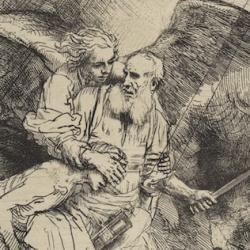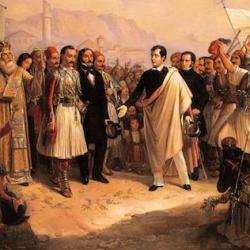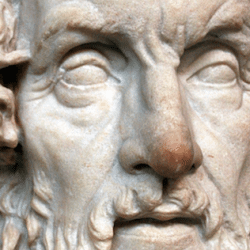Greek and Roman Animal Sacrifice, edited by Christopher Faraone and F.S. Naiden, is divided into four sections: modern treatments of sacrifice, Greek and Roman sacrificial practice, representations in visual arts, and sacrifice in Greek comedy and tragedy.
Bruce Lincoln opens with an informative survey of modern theories of sacrifice from Hubert and Muass through Robertson Smith and the ecstasies of Bataille to the work of Karl Meuli, a major influence on Walter Burkert’s influential Homo Necans. Fritz Graf brings things up to date with a summary of Burkert and Girard, Jonathan Z. Smith’s critiques, and a question: Where have all the grand theories gone?
F.S. Naiden’s essay takes up the question of sacrificial commensality, and poses obvious practical questions: How much meat did an animal yield? How many people ate? How much did they get? He doesn’t give definite answers to any of these questions, but employs a fascinating range of evidence to provide a range. On one end of the spectrum is the possibility that some 60% of Athens participated in the Artemis Agrotera, though that number may be as low as 1%. Naiden concludes that “No treatment of the evidence will lead to most people being fed anything but a plate of goat meat once a year” (68).
He challenges Vernant and Detienne’s suggestion that meat was distributed equally, emphasizing the role of the parasites, the assistants of the priests who, along with the priests themselves, received sacrificial portions. This opens up a wider conclusion: Sacrifice means commensality, but in what form? “It includes some measure of solidarity, but it also includes an obsession with honor. The officiant obtains the honor of bestowing rewards. The honoree is satisfied, but also laid under a future obligation to repay the honor. . . . Honor and reward matter more than consumption, but consumption is an honor, and so the contrast is misleading” (82).
John Scheid’s study of Roman sacrifice and “the system of being” contends that there is no marginalization of sacrifice during the imperial period, and that sacrifice continued to plays his “hierarchizing” role. He also broadens the scope of the issue by emphasizing that all slaughter of animals for food was “sacrificial” in the sense that a portion was offered to the gods. Meat was not unique in this regard, though, since wine and grain harvests were also “sacrificed” before being consumed.
Jan Elsner’s examination of sacrifice in Roman art tells a somewhat different story. Depictions of sacrifices decline after 200 AD, and nearly disappear after 230, “replaced by images of vegetarian kinds of sacrifice” (158). Such generalizations are unstable, though, since there are many regional variations. Still, Elsner ponders the irony of declining visual depictions alongside an increasing insistence that participation in sacrifice was the central act of Roman piety.
James Redfield suggests that Greek comedy, especially New Comedy, presents a Vernant/Detienne view of sacrifice, centering on the joy of common festivity. Alberg Henrichs chides Burkert for taking sacrifice in tragedy – always fraught – as a clue to ordinary sacrifice (“Burkert’s approach . . . perpetuates the sacrificial bias of tragedyA”), but Henrichs shows that tragedy does take a basically Burkertian view of sacrifice “in that it is preoccupied with the kill” (193). In short, for the Paris school is all joie de vivre; for Teutonic Burkert, all is darkness, blood, and thick slaughter.
Moving beyond the opposition between Paris and Zurich, and making use of the latest studies, Greek and Roman Sacrifice provides a fine introduction to the state of the question. It would have been improved if the editors had provided a bibliography.















